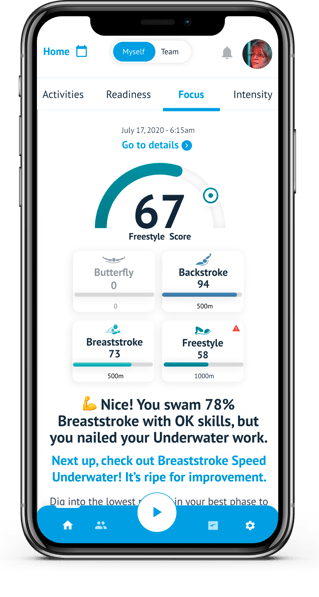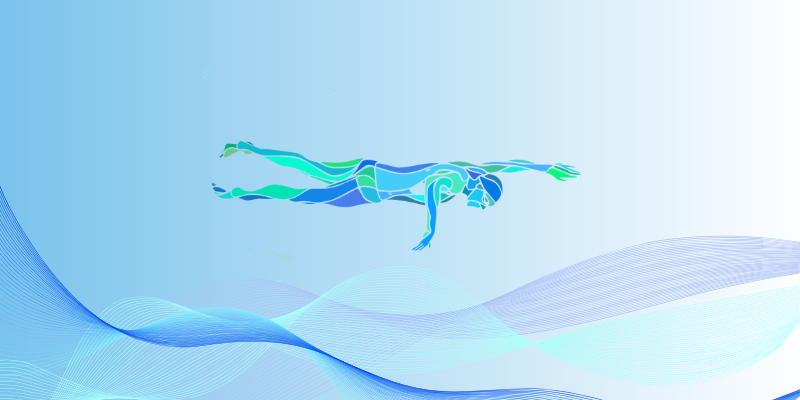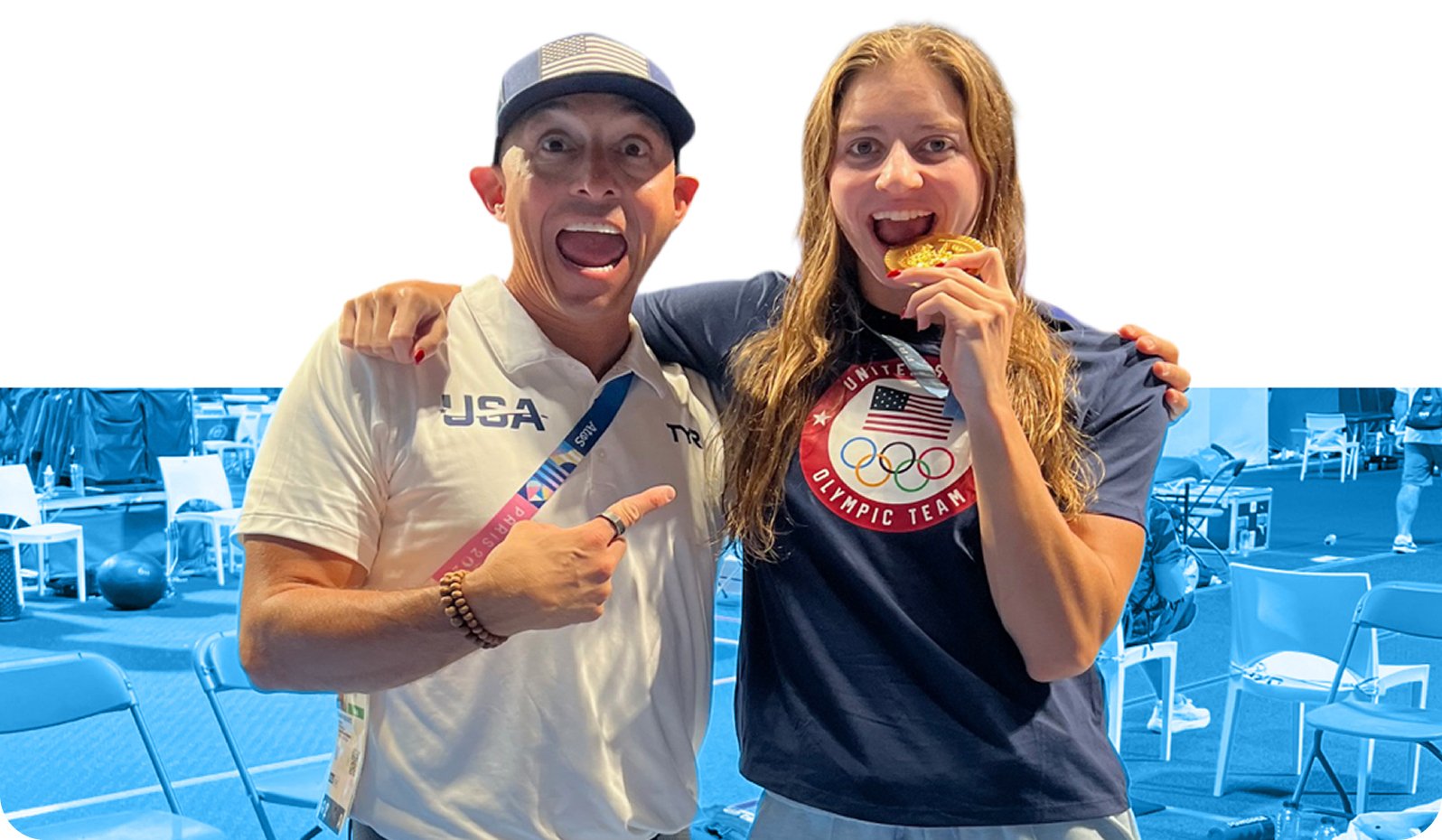Overwater swimming is one of the three phases of swimming we divide our data in to give you the Focus Score. The other two are the transition phase and the underwater phase. This type of breakdown by phase helps you easily identify what part of your swimming is costing you speed. More importantly, your personalized app recommendations will indicate the specific metrics you need to work on under each phase.
The two major components impacting your overwater speed are:
- distance per stroke (the distance travelled with each stroke)
- and stroke rate (the speed at which you move your arms per stroke cycle).
To swim fast, a swimmer needs to achieve the ideal DPS and SR. Note that when you increase the speed of your arms, you need to focus on holding the same amount of water. This means avoiding spinning your arms fast if you are not gaining distance with every stroke you take. Overwater swimming is influenced by different metrics like Strokes, Breaths, Stroke Rate, Distance Per Stroke, Stroke Index and Speed Overwater. All of these metrics are part of your Focus Score.
How to master overwater swimming?
1. Know your stroke metrics.

Knowing your Focus metrics will help you understand if you are directing your energy the right way. It will further show you if you’re holding water while you increase your speed.
Assuming you are doing splits on a set pace and breaking out at the same point every lap if you notice your stroke count increase along with your speed, this means that you have increased your stroke rate and decreased your distance per stroke.
The goal is to maintain a high enough Stroke Rate to sustain a good DPS. Finding the right balance between the two is a matter of sustainability: are you able to hold your stroke rate and carry your body through the water efficiently?
Once you have familiarized yourself with the Focus metrics, you can try incorporating specific drills to target each metric, for example, the stroke count with fists drill. This variation of the drill will add increased resistance to your swim and force you to optimize your technique to improve your stroke count.
2. Work on SWOLF.
SWOLF stands for Swim Golf: Split Time + Number of Strokes.
Here is an example of a SWOLF set: 16x50’s on a set pace time at 85% of your 50 best time. The goal is to lower your score each 50 without increasing your speed.
Pro Tip: Many coaches have a big screen on deck for video analysis. If you have access to one, you can choose a specific metric to focus on and engage with real-time data during your workout. In the example given above, you can use the SWOLF metric to turn your set into a game where swimmers can see their individual performance on the specific metric and rank better than their teammates.
Learn more tips on how to engage with real-time data.
3. Improve the relationship between DPS and SR.
Distance Per Stroke (DPS) measures the distance travelled from each stroke.
Optimizing the length of the stroke is critical to swimming performance because it impacts both stroke index and energy. The goal is to maximize the distance you can travel per stroke cycle. The more distance you cover with each stroke, the better your stroke index will be.
If your stroke rate is too low while your distance per stroke remains high, you’re gliding. If your stroke rate is too high while your distance per stroke decreases, then your pull may be inefficient. Striking a balance between a good DPS and an optimal SR is the ultimate goal of mastering overwater swimming.
How to do it really well?
For this drill, there is no recovery (the arms do not come out of the water). The drill finishes at the end of the stroke. Step 1. Start on your front with your head in the water and your arms extended over your head. Step 2. Work on alternating arms one at a time. Start pulling with your right arm and try to make sure you push the water as far past your hips as you can. Step 3. Focus on your finish. Recover the right arm underwater while you start pulling with your left arm.
Swimming with a band over your ankles will immobilize your legs. To make up for the loss of propulsion from the kick, you are forced to focus on maximizing your power with your catch and your pull. Pulling without kicking also favours an early entry and a higher stroke rate to make the pace time. |
4. Understand Stroke Index.
The stroke Index determines how efficient you are in a given stroke. As mentioned above, swimmers aim to strike a balance between a good DPS and an optimal SR.
A higher value on your stroke index translates to a more efficient stroke. A more efficient stroke also means a potential speed increase. This is because less energy is needed to maintain the same speed. A lower value on your stroke index may suggest that you need to focus on lengthening your stroke. Monitor how SI changes as your speed increases: it should increase.
Next, learn Understanding focus comparisons.



.png)

.png)